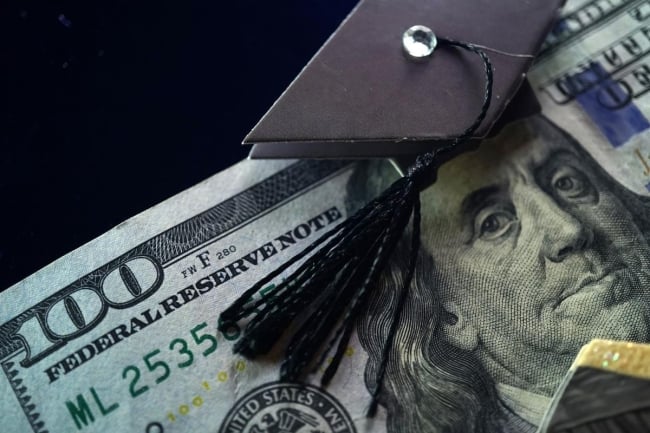You have /5 articles left.
Sign up for a free account or log in.

Kameleon007/iStock/Getty Images Plus
Consider, really consider, the numbers: one in seven Americans is still paying on their college loans that now total about $1.6 trillion. Recent graduates who borrowed money for college each owed an average of nearly $29,000 before they landed their first full-time job.
The sheer amount of outstanding student loans is staggering, so it’s a no-brainer to say that the debt forgiveness announced by the Biden administration last week could be life-changing to many of the approximately 45 million Americans who are still paying off college. But this debate over forgiving student debt—How much? For whom? And should we do it at all?—hides a more systemic problem: there is a vast misalignment between what many students pay to attend college and the salaries they earn after graduation.
Too many students are failing to consider the return on their education investment when they choose a college or a degree program; this, coupled with the relative ease of borrowing for both students and parents, has resulted in student loan debt more than tripling since 2006. Colleges and universities are at least partially to blame for this disconnect. The good news is that they can play an important role going forward in informing learners about the realities of learning and earning.
Make no mistake: degree completion still holds enormous value. For people from all walks of life, a college degree can lead to long-term social and economic mobility. The data show a generally positive correlation between education and income: the more education a person has, the more they’re paid each week and over their lifetimes.
But that’s not an ironclad rule. A recent report from the Center on Education and the Workforce at Georgetown University found significant numbers of people who outearn those with more advanced degrees. The report found, “Thirty-one percent of workers with no more than a high school diploma earn more than half of workers with an associate’s degree. Likewise, 28 percent of workers with an associate’s degree earn more than half of workers with a bachelor’s degree, and 36 percent of workers with a bachelor’s degree earn more than half of workers with a master’s degree.”
Students take out college loans with the best-case belief that their education will help them launch a high-paying career that will pay off their debt and set them up for success over their lifetimes. But the fact that significant numbers of Americans are being outearned by those with less education suggests that many college students don’t realize how much—or how little—their degrees are worth in the world of work.
It’s not hard to find examples of colleges and degree programs where the cost of attendance far outweighs the return on investment in the labor market. The Georgetown center found that more than half the students at 1,233 different postsecondary institutions—30 percent of the nation’s colleges—earn less 10 years after enrolling than someone with only a high school diploma.
Many Americans have come to realize they have been shortchanged. A survey conducted by Strada Education Network and Gallup found that only about a quarter (26 percent) of working American adults who attended college strongly agree that what they learned is relevant to their careers and their daily lives. And large numbers of people with college degrees—41 percent of recent grads and a third of all college grads—report being underemployed, stuck in jobs that don’t ask them to use the skills and knowledge they learned in college.
To rectify this situation, colleges and universities must do a better job of teaching in-demand skills that students need and employers seek. Institutions of higher education must help learners from the moment they step foot on campus make informed decisions about their career aspirations.
Colleges must establish pathways from the classroom to careers as soon as students arrive on campus. Institutions must clearly show which classes and degree programs lead to specific professions, and they must provide all students with professional guidance to help them stay on their chosen paths.
But most importantly, colleges must be transparent about the payoffs—or lack thereof—for all their academic majors and degree programs. The University of Texas system, the California Community Colleges system, the State University System of Florida and the U.S. Department of Education’s College Scorecard publish valuable student debt and/or salary information for graduates of different colleges and majors that can help learners make informed choices about courses of study and careers so they can maximize their educational return on investment. This sort of detailed data, along with local and regional internship and job postings and growth trends for various industries and professions, should be a standard feature at all colleges and universities.
In addition to making degrees more transparent, there’s growing interest among students and employers in short-term skills-based training programs that lead directly to a specific job. These short-term credentials are an efficient and cost-effective way to get people the education and training they need without loading them down with debt.
Employer-sponsored education could be a relatively low-risk way to finance college for those who would otherwise have to borrow. Having employers helping to create talent rather than just consuming it would go a long way toward creating financially sustainable training programs.
President Biden’s announcement last week that he would cancel $10,000 for all borrowers, and $20,000 for those who received Pell Grants, came after months of intense pressure for student loan relief from young Americans. Going forward, our nation would be wise to address the underlying issues that have caused so many Americans to rack up so much college debt. Until the cost of college and skills training programs become more transparent and aligned with market incentives for employers and job seekers—and until institutions and learners are laser-focused on educational ROI—every American president after Biden will be asked to settle the same debate over student debt.




